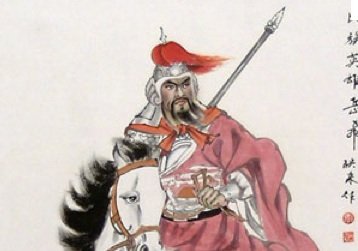
It is said that if you know your enemies and know yourself, you will not be imperiled in a hundred battles; if you do not know your enemies but do know yourself, you will win one and lose one; if you do not know your enemies nor yourself, you will be imperiled in every single battle.
Sun Tzu- The Art of War
I am a believer in the Art of War, especially applied to business and marketing. When I talk to groups on business and marketing subjects I use this quote and it has guided me in the way I approach building businesses and helping companies grow. I have listened to numerous investment pitches at TechCoastAngels screenings (a real Shark Tank) and have heard too many times that the entrepreneur believes there is NO competition. There is always competition, i.e. another way to solve a problem or provide a service. Even when a company realizes that there is some semblance of competition, many executives believe they have more attributes, a better business model, and a stronger brand than reality leads them to accept.
Sadly, this problem extends way beyond the startup world. In 2008, Jim Keyes, CEO of Blockbuster said: “Neither Redbox nor Netflix are even on the radar screen in terms of competition.” While Redbox had its glory days and has now faded, Netflix continues to soar as they are able to take advantage of streaming media and they have evolved their business model. Blockbuster and its ubiquitous blue and yellow stores have faded into oblivion after ceasing operations in 2013. When I was at RCA (when it existed as a standalone company) one of the execs in the tube division beat his plan but unfortunately failed to recognize competition from semiconductors. He was fired. And let’s not forget other companies such as Digital Equipment Corporation, Wang, Motorola and Nokia in the tech field. Not only did they fail to understand the competition, their business strategies did not evolve. We are now seeing consumer companies such as Macy’s and Kohl’s which failed to recognize the competitive environment fast enough (can you say Amazon and online shopping) and are now closing many of their stores.
There is hope though, for most companies as they consider their competition, the environment and the competencies they need to put in place to execute a new business strategy. To that end, here are the six steps companies must take to gain and/or retain a competitive edge.
1. The first step to beat the competition is to recognize that there is competition! Competition comes from direct competitors, i.e. those offering the same type of product or service; indirect competitors; and even the do-it-yourselfers. Even if a competitor is small today, should technology or macroeconomic trends change, a small new company can become dominant. That is what happened to Blockbuster. Competition doesn’t have to come from the same players in the industry. Who would have thought Google and Apple, both, would be developing an autonomous car or at one time a smart phone. As we celebrate the 10th anniversary of the iPhone, there was a time when dominant companies in the market such as Nokia and Motorola did not consider Apple a threat and frankly, they did not believe companies like LG and Samsung were threats either. Both Nokia and Motorola have lost their luster.
Keep alert and be paranoid. Use user panels talk to “lead users” who are early innovators of new products, set up Google Alerts on companies that are current competitors as well as those which have the right competencies to become competitors. Your product might be better and that message needs to be conveyed to your target audience. You can recognize the competition through the use of user panels, discussions with “lead users’ and even setting up Google Alerts.
2. The second step is to know the competition. A couple of months ago, I was watching a classic war movie called Patton. Patton was reading the works and biography of Rommel, his nemesis, competition and enemy. Rommel in turn was trying to learn through books and other sources, how Patton thinks and how he would fight. It’s classic Sun Tzu! Even without teams of analysts and staff there are a few tips in understanding and knowing your competition.
Executives can become the equivalent of Undercover Boss. When I was the top marketing executive for US Cellular, I personally visited both my stores and those of my competitors. It’s easy to do even in a business to business environment. Other tools that can be used include Customer Advisory Boards, user panels, cross-functional teams that meet regularly to discuss competition and the environment. At ATX Group (now Sirius Connected Car), every other Friday morning I hosted a cross functional group of executives to discuss new technology and competition. Certain execs were tasked with following specific competitors and sharing that information in Microsoft Exchange folders for our sales, marketing and technologists to use. Other tools include Spider diagrams, focus groups and market research including subscribing to the industry analysts that cover your industry. In the tech field those industry analysists include Gartner, Forrester, IDC and Ovum among others. If a public company is a competitor, read their 10-Ks; it’s amazing how much information is available in that document.
3. The third step is to know yourself. Some of the same tools used to understand the competition can be used to understand your own company. Spider diagrams, side by side market research matrices that can highlight those attributes that are important to your customers and for which you perform well or poorly can help set your company’s strategic imperatives. I am a huge fan of developing a SWOT analysis which covers strengths, weaknesses, opportunities and threats. To do SWOT well companies should seek out key thought leaders in their company, regardless of level and even use newly recruited employees who have a different perspective because of their recent outside experience. Doing mystery shopping even in a business to business company is also relatively easy. At a telecom company in New Jersey, one of my marketing managers set up a false company called The Fred Racciopi Cement Shoe Company of Central New Jersey (obviously we set this up tongue and cheek) and became a customer of each competitor and well as our own company. It’s amazing what we learned and through those learnings we adjusted our training program, branding, positioning and marketing material.
4. The fourth step is to develop and explain the factors that make you different. Customers buy from companies that provide a unique value for their needs. If the value is significant, relevant to the customer, sustainable and credible, the company will have a differentiable advantage. This enables executives to create a “moat” around their company and its products, protecting the company from competitive incursions. The strength of your differentiation is akin to the size of the moat. Even commodities have moats. Think about salt or rice, two very basic commodities. Do you believe that Morton’s salt is better than other salt and worth a 15% price premium? Or how about Mahatma rice vs Kroger-branded rice? What about chicken? What company said: It takes a tough man to make a tender chicken?” (The answer is Purdue Chicken.)
If you can differentiate these commodities, you can differentiate any company and its products. There are several ways upon which to differentiate. Intellectual property (IP) or Patents is an obvious one. Even IP may not be sustainable or even relevant to your target market. Other ways to differentiate are based on what Adrian Slywotsky, author of Profit Zone, calls strategic control points which are defined as some type of unique advantage for a company based on competency or partner relationship. All companies can find at least one. These could include their brand, their business partners, distribution partners, unique processes, innovation, low cost of manufacture, unique customer knowledge, access to certain resources be they commodities or people and similar items. A company has to find those strategic control points that are relevant to their markets and be consistent and credible in delivering on those elements.
5. The fifth step is to develop plans: Developing and executing a plan is critical to success. A written plan should include specific elements. By target market, a goal needs to be defined, a strategy clearly enunciated, and tactics developed with specific milestones, costs, and a person responsible for delivering the tactics. Our opinion is that a plan should have one specific leader who is accountable for the entire result. Individuals who report to this leader need to be designated for each tactic and milestone. C-Level Partners also believes that these plans need not be long winded and in fact the best plans have focus and clarity and might even be codified on one or two pages at maximum. I personally am in favor of one page plans with specific deliverables. I like using a method called RACI (responsible, accountable, consultative and informed) to ensure that the right people in a company are involved in the development and execution of the plan.
6. The sixth and final step is to monitor, measure, modify. Each plan developed in step 6 should have a complementary set of metrics to track the success of the plan. Metrics vary depending on the plan and some of the metrics can include: average revenue per sale, total sales, return on investment, market share, win/loss ratio of business, aided and unaided awareness, average order quantity, SEO, the timeliness of performing the tactic, and other operational, business or product criteria. Each month these metrics should be added to a scorecard – preferably balanced – and reviewed with the operational or executive team. If a metric is not on target, then the executive responsible for the metric has to provide a corrective action plan. If the metric is very critical to the business strategy or to the overall goals of the plan, then a separate deep dive should be performed where the elements of the plan can be discussed in detail.
As an executive it is sometimes hard to see the competitor when you are mired in the day to day operations. You can always look to outsource part of these six steps or recruit internally some of the best and brightest less tenured people in the company. Successful companies couple strategy with competitive analysis to create and maintain an advantage. When I first converted from an engineer to a marketer, I cut my teeth on competitive analysis. It was the perfect start to figure out how to gain an advantage for the new products I was developing for my customers. I was fortunate to have the opportunity to help drive the strategic vision of my company at the same time. That integration is, in my opinion, critical to a company’s success.
Once you gain a competitive advantage, you have to stay ahead of the competition. That is a subject for a future blog, yet we at C-Level Partners believe that maintaining a competitive edge means companies have to continue to innovate, with technology, with their people, and through their processes. They must maintain contact with customers and open their ears and even seek out criticism. And they must strive for not only incremental improvements but also stretch for what we call the “art of the possible.”
As a technologist and business executive, I always keep in mind the title from Andy Grove’s book, “Only the Paranoid Survive.” Yet with discipline and a plan as outlined in these six steps we believe that companies will be able to develop a competitive edge and flourish in this hypercompetitive environment.
If you have comments or would like to talk further feel free to contact me at dfriedman@clevelpartners.net or call me on 949 4394503.
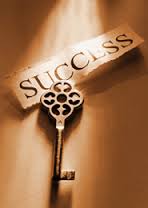 No one is psychic at TechCoastAngels. Yet, we believe there are keys to success for start-ups. For the past couple of weeks, myself and 6 other angel investors from TechCoastAngels of Orange County have screened more than 120 entrepreneurs in preparation for the “finals” of our fast pitch competition at TCA’s upcoming
No one is psychic at TechCoastAngels. Yet, we believe there are keys to success for start-ups. For the past couple of weeks, myself and 6 other angel investors from TechCoastAngels of Orange County have screened more than 120 entrepreneurs in preparation for the “finals” of our fast pitch competition at TCA’s upcoming  The other night I was asked by a colleague who had a question from a reporter at INC Magazine what are some success tips for entrepreneurs and additionally what are some tips when you run into trouble. I have written about tips for budding entrepreneurs in my blog on The Business of Business in the past and have written on behalf of the TechCoastAngels as well.
The other night I was asked by a colleague who had a question from a reporter at INC Magazine what are some success tips for entrepreneurs and additionally what are some tips when you run into trouble. I have written about tips for budding entrepreneurs in my blog on The Business of Business in the past and have written on behalf of the TechCoastAngels as well. This is a particularly interesting subject as we, investors, think about investing in a company. And while this blog is directed to those potential entrepreneurs, the ideas suggested in this blog are equally applicable to new products and services developed by a business to increase their revenue, replace existing products/services, or compete in the market.
This is a particularly interesting subject as we, investors, think about investing in a company. And while this blog is directed to those potential entrepreneurs, the ideas suggested in this blog are equally applicable to new products and services developed by a business to increase their revenue, replace existing products/services, or compete in the market.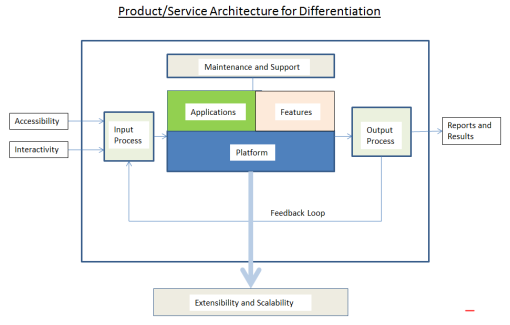
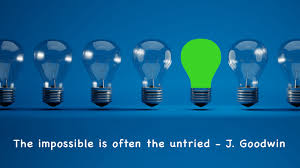 I was sitting at lunch with a few of my friends and thinking about the start of the New Year. Of course, we all made resolutions to eat better, exercise more, and to enjoy life by having more balance and more fun. As we start this New Year, we wish people success and prosperity.
I was sitting at lunch with a few of my friends and thinking about the start of the New Year. Of course, we all made resolutions to eat better, exercise more, and to enjoy life by having more balance and more fun. As we start this New Year, we wish people success and prosperity. I was at a very interesting meeting hosted by Brett Olinger and Susan Howington, founder, Power Connections on Dec. 16, 2015. There were about a dozen high level executives around the table with titles ranging from VP to COO to CMO to CEO. Susan got us together to talk about business issues and she asked a relatively simple question: What makes a company great? And the subordinate theme of what kind of company would you want to work for or build?
I was at a very interesting meeting hosted by Brett Olinger and Susan Howington, founder, Power Connections on Dec. 16, 2015. There were about a dozen high level executives around the table with titles ranging from VP to COO to CMO to CEO. Susan got us together to talk about business issues and she asked a relatively simple question: What makes a company great? And the subordinate theme of what kind of company would you want to work for or build? It’s that time again when just about everyone has predictions for the New Year. In November, Forbes contributor Kimberly Whitler posted predictions from the C-suite. Adam Davidi, from the Guardian, posted predictions on branding based on conversations with “experts.” I am sure we will see predictions from Forrester, Gartner and others as well.
It’s that time again when just about everyone has predictions for the New Year. In November, Forbes contributor Kimberly Whitler posted predictions from the C-suite. Adam Davidi, from the Guardian, posted predictions on branding based on conversations with “experts.” I am sure we will see predictions from Forrester, Gartner and others as well. I was reading an
I was reading an 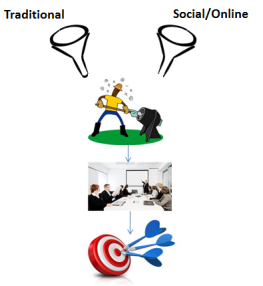 Marketing has changed and will continue to evolve over the next several years. Clearly there will be a natural bonding between the CIO and CMO as marketing technology has become more important in defining the marketing mix. While Ms. Whitler did not ask my prediction for 2016, I will share it with my readers. I predict that marketing will be more about the customer and the great marketer will find the right combination of the 7 elements to build and sustain relationships with that customer. At least I hope so.
Marketing has changed and will continue to evolve over the next several years. Clearly there will be a natural bonding between the CIO and CMO as marketing technology has become more important in defining the marketing mix. While Ms. Whitler did not ask my prediction for 2016, I will share it with my readers. I predict that marketing will be more about the customer and the great marketer will find the right combination of the 7 elements to build and sustain relationships with that customer. At least I hope so.
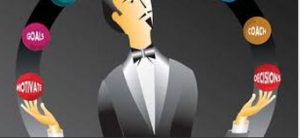

Recent Comments